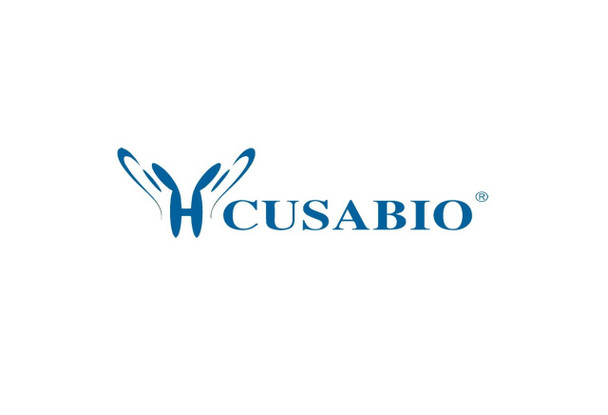Cusabio Virus & Bacteria Recombinants
Recombinant Bovine Nucleotide-binding oligomerization domain-containing protein 2 (NOD2), partial | CSB-EP732277BO
- SKU:
- CSB-EP732277BO
- Availability:
- 3 - 7 Working Days
Description
Recombinant Bovine Nucleotide-binding oligomerization domain-containing protein 2 (NOD2), partial | CSB-EP732277BO | Cusabio
Alternative Name(s): Caspase recruitment domain-containing protein 15
Gene Names: NOD2
Research Areas: Cell Biology
Organism: BO-Bos taurus (Bovine)
AA Sequence: MCAQDAFQTQRSQLVELLVSGSLEGFESILDRLLSREVLSWEDYEGLSLVGQPISHLARRLLDTIWNKGTWGCEQLTAAVREAQADSQPPELPSSWDPHSPHPARDLQSHRPAIVRRLYGHVEGVLDLTQQRGFISQYETDEIRRPIFTSSQRARRLLDLATVKANGLAAFLLQCIQELPVPLALPFEDAA
Source: E.coli
Tag Info: N-terminal 6xHis-KSI-tagged
Expression Region: 1-191aa
Sequence Info: Partial
MW: 36.8 kDa
Purity: Greater than 85% as determined by SDS-PAGE.
Relevance: Involved in gastrointestinal immunity. Upon stimulation by muramyl dipeptide (MDP), a fragment of bacterial peptidoglycan, binds the proximal adapter receptor-interacting RIPK2, which recruits ubiquitin ligases as XIAP, BIRC2, BIRC3, INAVA and the LUBAC complex, triggering activation of MAP kinases and activation of NF-kappa-B signaling. This in turn leads to the transcriptional activation of hundreds of genes involved in immune response. Required for MDP-induced NLRP1-dependent CASP1 activation and IL1B release in macrophages. Component of an autophagy-mediated antibacterial pathway together with ATG16L1. Plays also a role in sensing single-stranded RNA (ssRNA) from viruses. Interacts with mitochondrial antiviral signaling/MAVS, leading to activation of interferon regulatory factor-3/IRF3 and expression of type I interferon.
Reference: "Identification of genetic variation and putative regulatory regions in bovine CARD15." Taylor K.H., Taylor J.F., White S.N., Womack J.E. Mamm. Genome 17:892-901(2006)
Storage: The shelf life is related to many factors, storage state, buffer ingredients, storage temperature and the stability of the protein itself. Generally, the shelf life of liquid form is 6 months at -20?/-80?. The shelf life of lyophilized form is 12 months at -20?/-80?.
Notes: Repeated freezing and thawing is not recommended. Store working aliquots at 4? for up to one week.
Function:
Involvement in disease:
Subcellular Location:
Protein Families:
Tissue Specificity:
Paythway:
Form: Liquid or Lyophilized powder
Buffer: If the delivery form is liquid, the default storage buffer is Tris/PBS-based buffer, 5%-50% glycerol. If the delivery form is lyophilized powder, the buffer before lyophilization is Tris/PBS-based buffer, 6% Trehalose, pH 8.0.
Reconstitution: We recommend that this vial be briefly centrifuged prior to opening to bring the contents to the bottom. Please reconstitute protein in deionized sterile water to a concentration of 0.1-1.0 mg/mL.We recommend to add 5-50% of glycerol (final concentration) and aliquot for long-term storage at -20?/-80?. Our default final concentration of glycerol is 50%. Customers could use it as reference.
Uniprot ID: Q6E804
HGNC Database Link: N/A
UniGene Database Link: N/A
KEGG Database Link: N/A
STRING Database Link: N/A
OMIM Database Link: N/A









